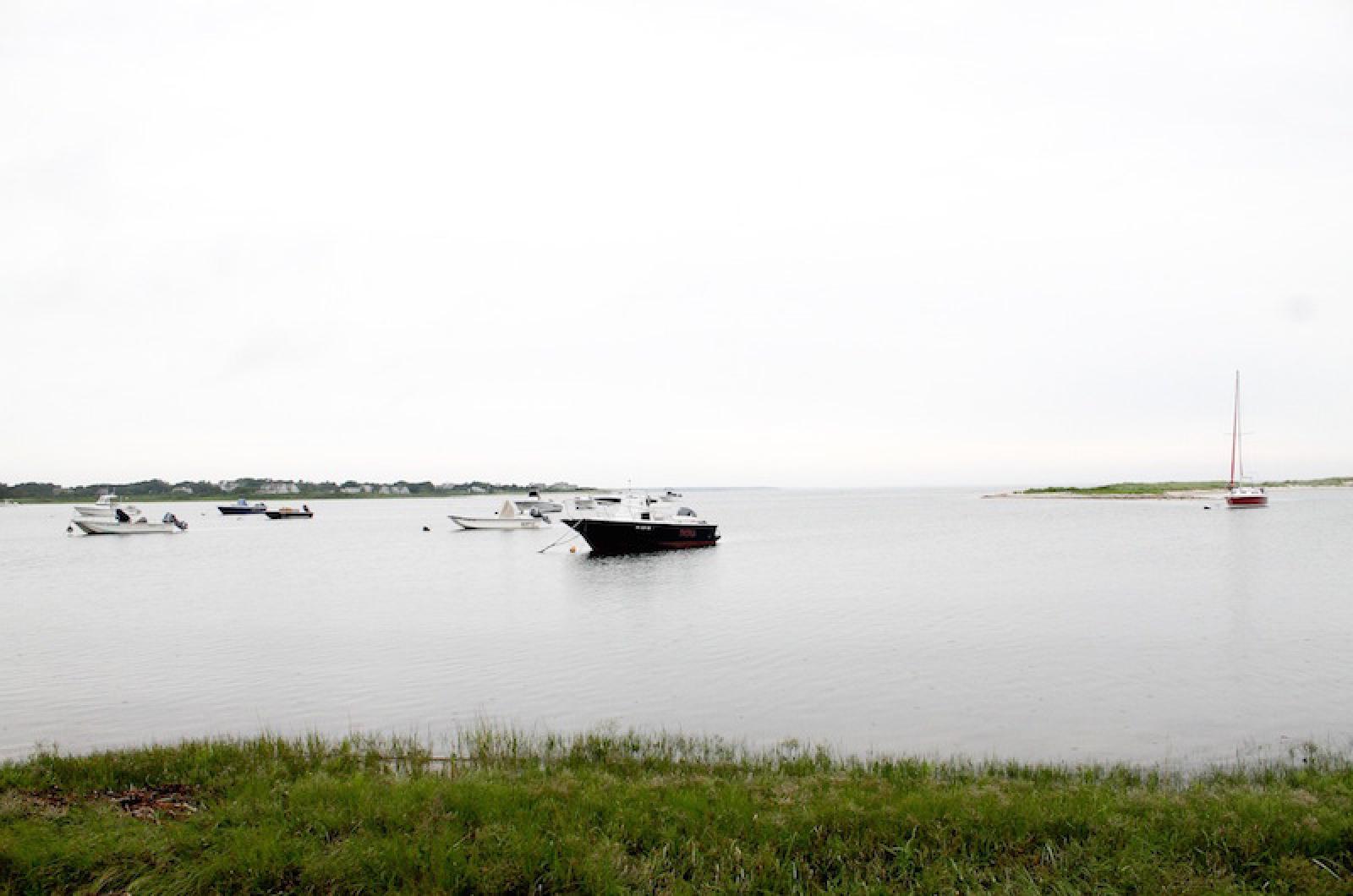From the April 1984 editions of the Vineyard Gazette by Henry Beetle Hough:
Eel Pond, anciently so named, is no longer a pond. It looks out from Edgartown through a wide opening into the Sound, a fact that might make it a bay, but to call it a bay is not good enough. From some points of view it has the character of an inland sea.
Probably most people think of it in terms of how it looks on the map or in relation to the tides or the shellfish it produced for centuries and could produce again. But the landward side, mostly wooded, which for some distance slopes off from the modest height of Long Hill and extends outward into some of the Island’s most important salt marshes, is vibrant with a distinctive life of its own. The salt marshes gleam with color throughout the long autumn. Native sea lavender and samphire are attractions of the border region.
Planting Field Way, laid out and named in 1653, is the thoroughfare that follows the line of the pond and turns to end at Planting Field Point. It is when an observer looks down through the bordering woodland and commands a tree-framed view of blue water, a view solely his own, that the image of an inland sea comes to mind.
Preservation of this Vineyard source, both economic and aesthetic, has been much in the news lately, but with less prominence than it deserves. An extended acreage of the shorefront and native woodland, given by Walter A. Eberstadt to the Sheriff’s Meadow Foundation for permanent preservation in its native state, ought to mark a new era of assurance for Eel Pond in the future. A new advance of interest in the region, and an example of the broadest premises, should bring about continued momentum.
The aim, so far as the land area is concerned is not to stop all building or all human occupancy, but to plan and manage a proper, conserving use of a fragile area.
Our newest dictionary defines “graffiti,” a word more and more prominent in newspapers and popular culture, as “any scrawling written or drawn, so as to be seen by the public,” and refers to the Italian for the word’s origin. The last is not surprising, since the word sounds Italian. But what about the early and late American pioneering in such inscriptions, often on trees and fences in the great outdoors?
How about white-whiskered Calvin Tilton of Middletown on the Vineyard who used to scrawl on mail boxes, gates or board fences, such advice as “Turn or Burn.” This was Calvin’s way of propagating his views which seemed narrow to some but were wide enough for him for easy traverse.
It was such inscriptions in public that led to the wide currency in the years around the turn of the century of the rhyme of two lines: “Fools’ names as well as faces/Are often seen in public places.”
Who now can recall what was rudely written on the rear of the Locust Grove schoolhouse, or possibly it was the Lambert’s Cove schoolhouse, along about 1906? Graffiti were part of the common usage of American youth, and perhaps it is well to pass quickly over the general content.
One turns willingly to the romantic pledges or initialed insignia carved with jack-knives in the tempting smooth bark of great beech trees in the woods of the Vineyard? The carved initials, intertwined hearts and so on was meant to endure for a lifetime. Perhaps the young love did endure, but as the beech tree grew, the initials and hearts were altered into unintelligibility.
In the age of communication and imitation, as this age surely is, we fear that the mainland graffiti is replacing both the purpose and the substance of that known to schoolboys, lovers, and bearded evangelists on the Vineyard just as squirt-cans have replaced jack-knife and crayon as the favored method of execution.
The Spanish have a proverb — if it is still remembered down the ages — that dates from the era of soothsayers and may be said to have anticipated meteorologists by many centuries. Some say that meteorologists are also soothsayers, which is nothing against them if they happen to be.
The Spanish proverb says: “When God wills, it rains with any wind.” Even if this shakes our faith a little in our own northeasters, the recent celestial waterfalls do give it some color of truth. Did anyone notice precisely from what direction the driving torrents came when the flooding occurred? It came, one would say, from all directions.
Everything was neat and tidy last fall. Anyway, we thought it was when we had finished raking and disposing of dead leaves and so on, but winter is an untidy season.
There is a lot of patching and painting that now shows up more conspicuously than before the rains. If one wants to be philosophical about it, he can reflect that the sound of the hammer is among he spring sounds, and the smell of fresh paint is among the early fragrances of the season — not so much as it used to be, what with the odd mixtures paint has tended to become, but an authentic element recalling springs of long ago.
Compiled by Hilary Wall
library@mvgazette.com




Comments
Comment policy »